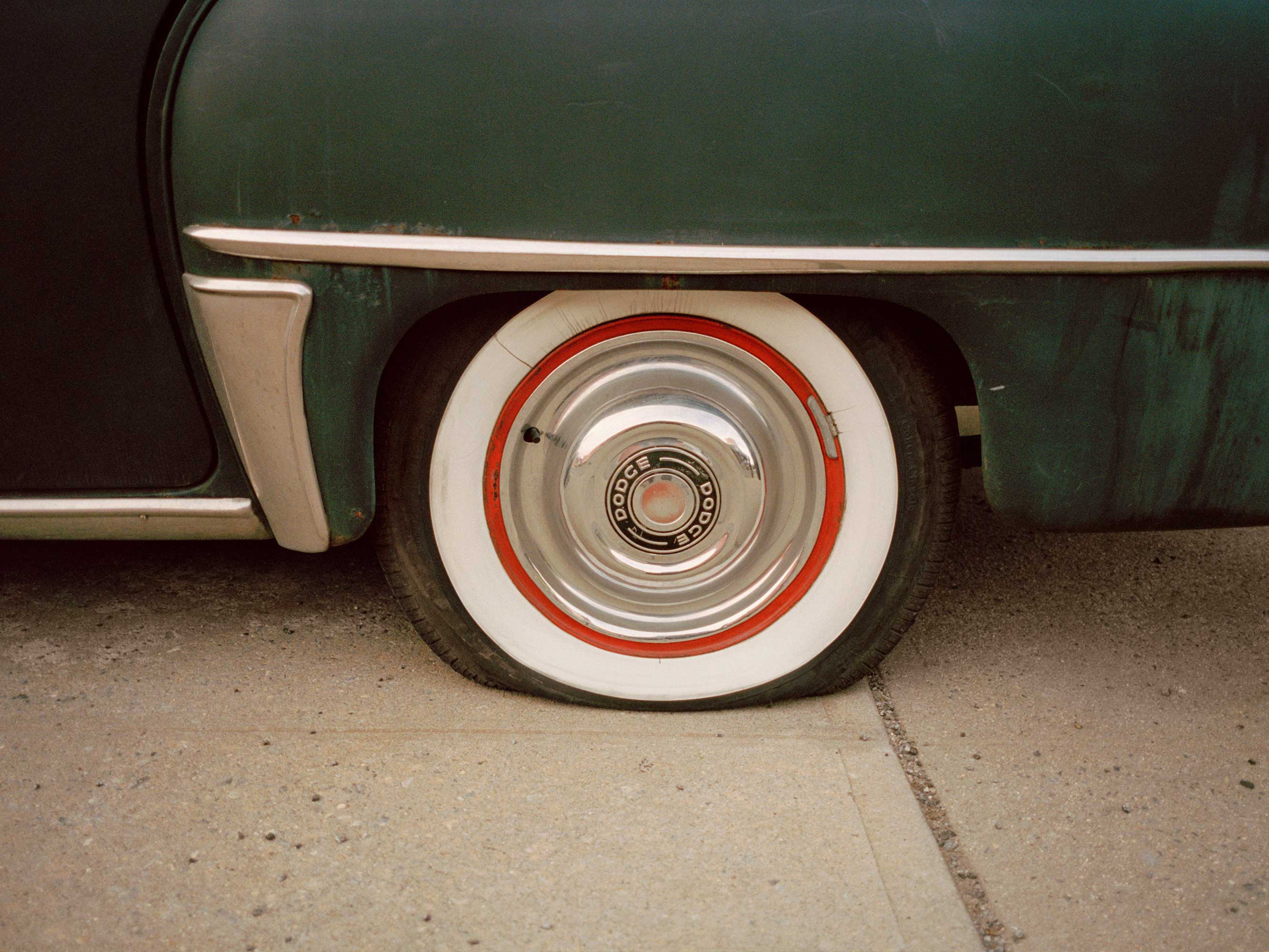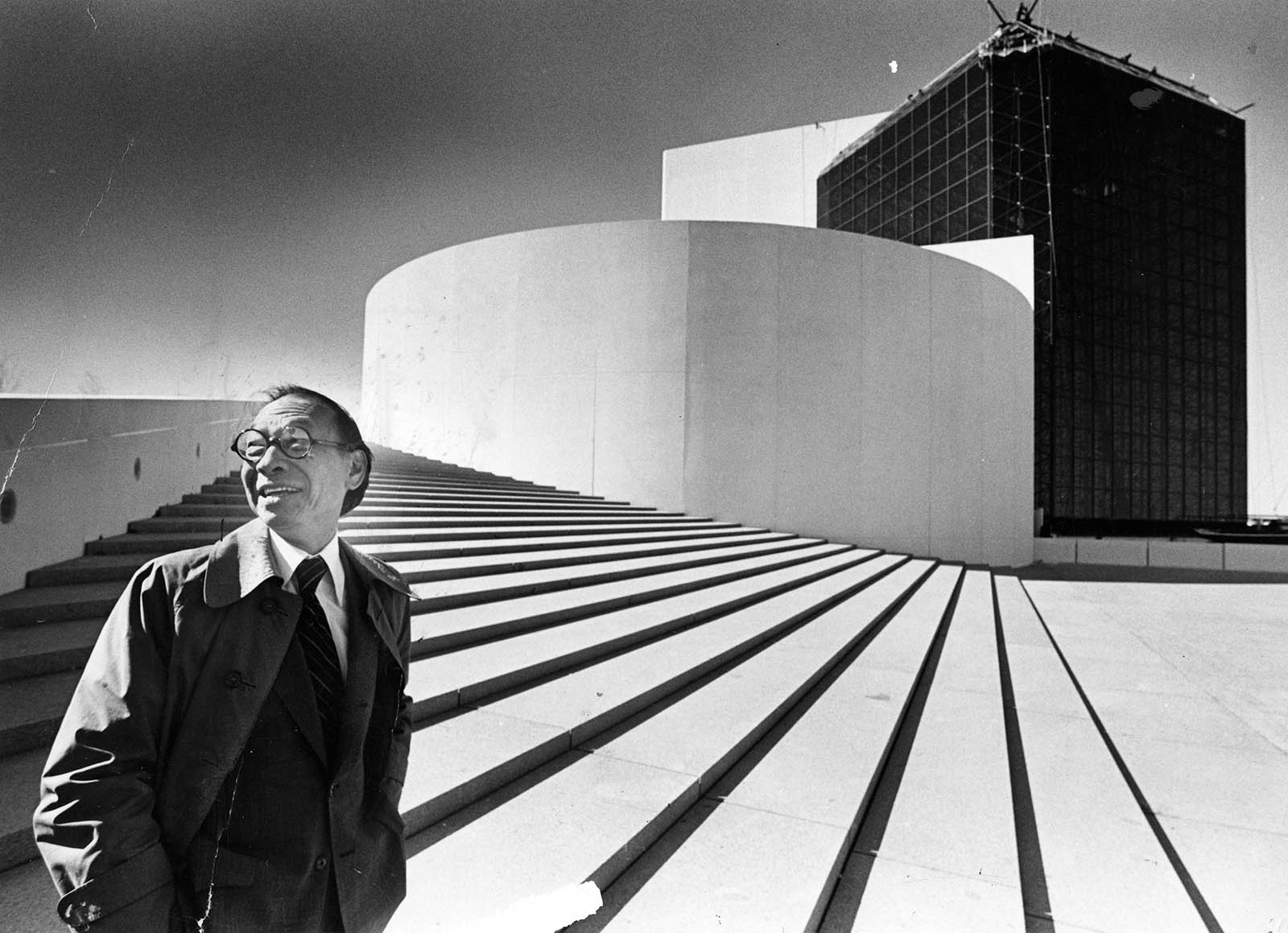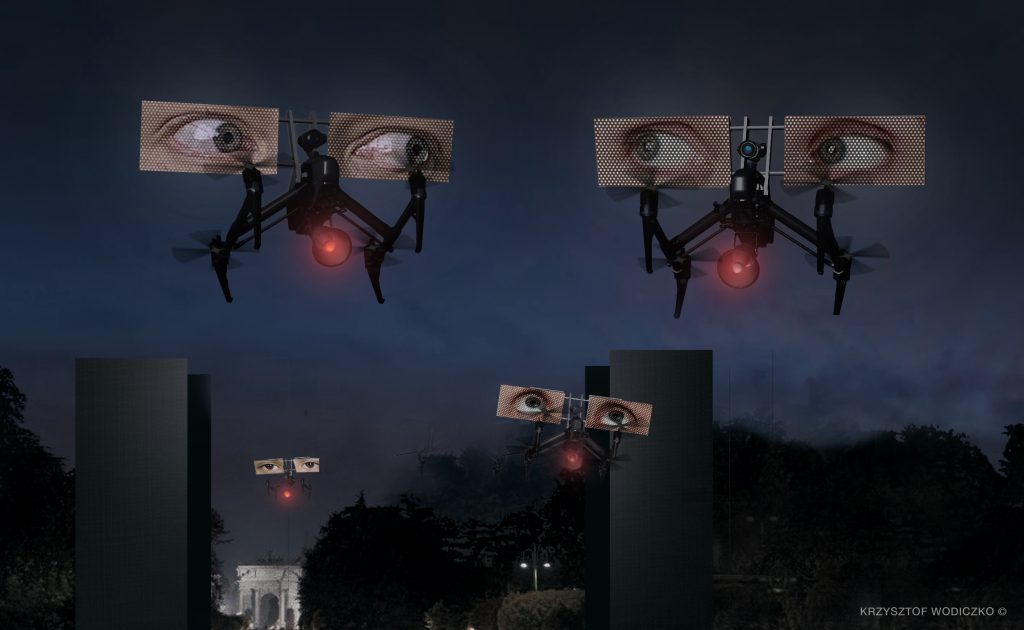Student work: Mining an emerging area of dementia studies, Alicia Valencia encourages memory-care facilities to embrace aesthetic play
Children may be celebrated for their non-rational thoughts, but society expects that adults will use reason. This belief is in part why dementia is often framed solely in terms of impairment, and why the dominant method of dementia care focuses on those reasoning faculties which are deteriorating or have already been lost.
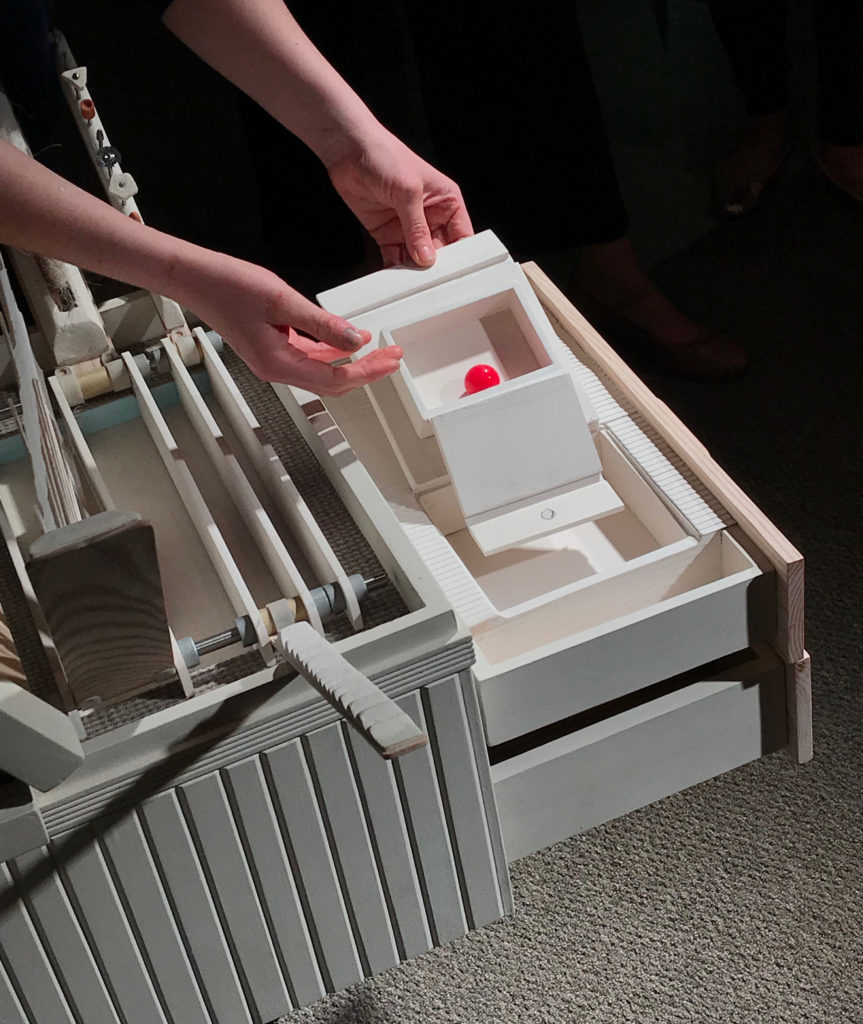
According to Alicia Valencia (MDes ’19), however, an alternative approach is possible. Instead of concentrating so heavily on reasoning skills—by asking memory-impaired nursing home residents yes-or-no questions about the weather, or labeling everything in a way that insists on a set, singular identity for each item—why not focus on aesthetic engagement with the world? In her thesis, “Cultivating Aesthetic Play: A Case for Culture in Dementia Memory Care,” Valencia asserts that “the ability to perform aesthetic judgment still remains even as language skills and memory weaken.” She explains, “The capacity to decide whether something is lovely or not, to have certain feelings about the world, remains much longer in a person with dementia than knowing to put a book on a shelf.”
Valencia’s case study is personal: It’s based on her 81-year-old father, a resident at an in-patient memory-care facility in California. “The relationship I have with him might not fit the usual father/daughter label anymore, but it’s still an innate belief and knowledge that is beautiful to him in certain respects,” she describes. The way in which their relationship resists traditional classifications echoes her father’s connections with other elements of his environment, too. “The ways he and others at the facility make sense of where they are located and how they learn to call their new environment their own do not fall strictly into categories of reason, knowledge, short-term memory, or definitions of the world curated to a certain extent by the biomedical facility,” she says.
These observations resonate with an emerging area of dementia studies known as “critical dementia,” which reformulates the relationship between patient and practitioner by giving value to the patient’s potentially unorthodox behavior toward their surroundings. “It’s useful for a person who might be working well without the faculties of language, or when someone may or may not be emotional when they encounter something new,” Valencia explains. “It’s a way to broaden the scope of what can be understood as relatable to individuals with dementia.”

Critical dementia has its limits, though, she argues, as it still reinforces a framework of needing to render a patient’s activity intelligible to a practitioner. In other words, the practitioner’s way of making meaning in the world retains a level of superiority. Just as we foster positive interactions with children who have not yet internalized certain societal codes, Valencia proposes that we learn from individuals with dementia about different ways of functioning healthily in our respective environments.
To explore this hypothesis, Valencia designed an object for her father based on his biography, his observed behavior in the facility, and also the ways in which he and other residents use both fixed and transitory objects in their shared environment. She explains, “He likes to zoom around in his wheelchair and pick out details in objects like crown molding or metal fixtures. He also has a history of breaking down his hospital bed just to see the different parts.” All of this resonates with his background both as an electrical engineer and as a professional cyclist. Inspired by his specific interests, Valencia created an object that resembles a Duchamp readymade. Designed to reflect his passion for tinkering and cycling, it has hardwoods different from those around him so that they might stand out, an assortment of sensory materials, drawers filled with various items, and a bicycle wheel affixed to the tabletop.
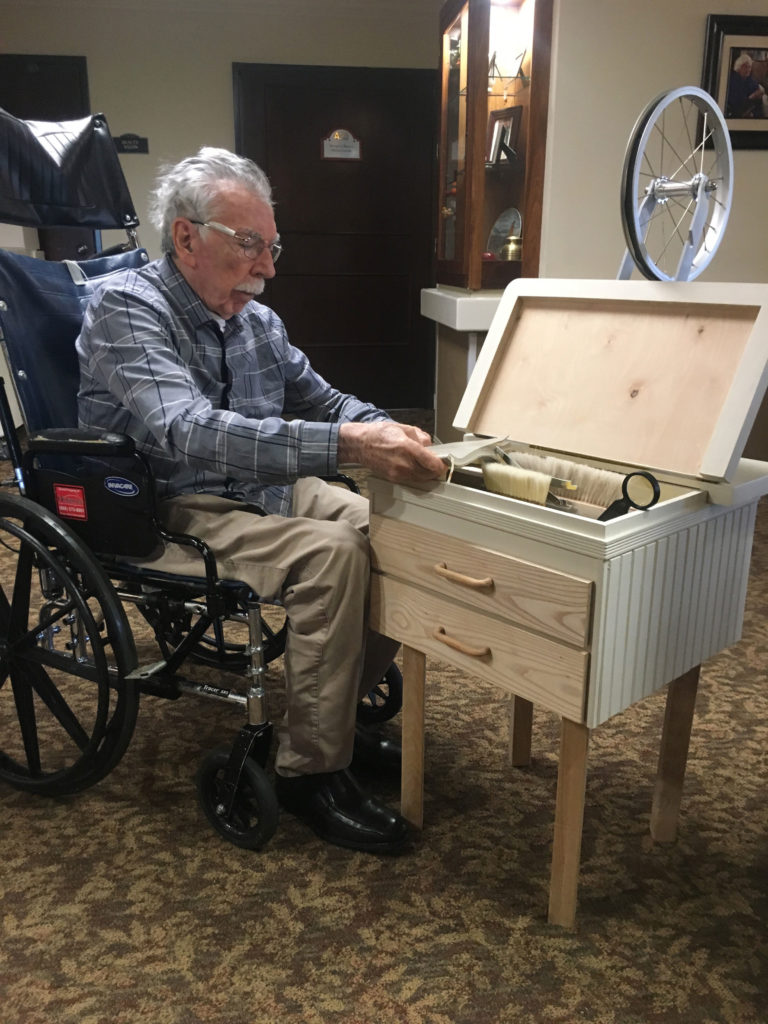
But it was also designed with his neighbors in mind and was placed in the hallway outside his room. “There is an open-door policy at his facility, so anyone can be roaming in and out of rooms. Everything is fair game so that it doesn’t stir aggressive behavior to tell someone they can’t be somewhere or have something,” Valencia explains. “As a catalyst for engagement to be played with, observed, and analyzed, the object has pieces that can be taken away and moved elsewhere within the broader environment. That’s based on people’s behavior of taking something from someone else’s room, walking around with it, and then later questioning why they have it in their hands and where to put it. This table is an example of how to design a hub of different malleable materials that could be adopted by each patient within the nursing home environment.”
Valencia hopes that the ways in which her father and others engage with the table will generate a body of evidence that challenges not only standard preconceptions about individuals with dementia and occupational-therapy objects but also caregivers’ and practitioners’ understanding of human environments more broadly. “A lot of enrichment activities are performed just to occupy one’s time,” she says. “But I hope the ways in which residents interact with this object can reveal relationships that would instigate the creation of additional design objects—perhaps made by the residents themselves. Because there are so few personal aspects to these environments, I wonder how something very direct and built from them could change the engagement and experiences within the nursing home.”
At the Gardner Museum, Big Plans draws on landscape architecture’s progressive, reform-minded roots
By the time Frederick Law Olmsted Jr. founded the world’s first landscape architecture program at Harvard in 1900, he and other landscape architects, like his father, had devoted much of their careers to addressing some of the era’s greatest social challenges. For Frederick Law Olmsted, confronting the institution of slavery and the cotton economy was of profound importance. For Charles Eliot, advocating for progressive land trusts and conservancies was vital. Eliot shaped much of how the Boston region would develop in the coming century while conceptualizing a framework of conservation of natural resources that would be applied around the world.
As anti-immigrant and nativist anxieties germinated in turn-of-century America, the establishment of a landscape architecture program at Harvard, under the presidency of Eliot’s father, Charles William Eliot, presented a novel—and enduring—expression of design’s potential to ameliorate the growing pains of an evolving society.
Poets, prophets, and reformers are all picture-makers, and this ability is the secret of their power and their achievements. They see what ought to be by the reflection of what is, and endeavor to remove the contradiction.
Frederick Douglass from a lecture Douglass presented in Boston’s Tremont Temple on December 3, 1861
“In its original formulation, the field of landscape architecture was seen to hold great promise to address societal and environmental conditions through design,” observes Charles Waldheim, the Graduate School of Design’s John E. Irving Professor of Landscape Architecture and Director of the Office for Urbanization. “While neither Eliot would have used the term ‘social justice,’ they did see the development of landscape architecture, the building of reform parks, the conservation of natural resources, and the building of modern sciences to support these activities as directly addressing the lives of people.”
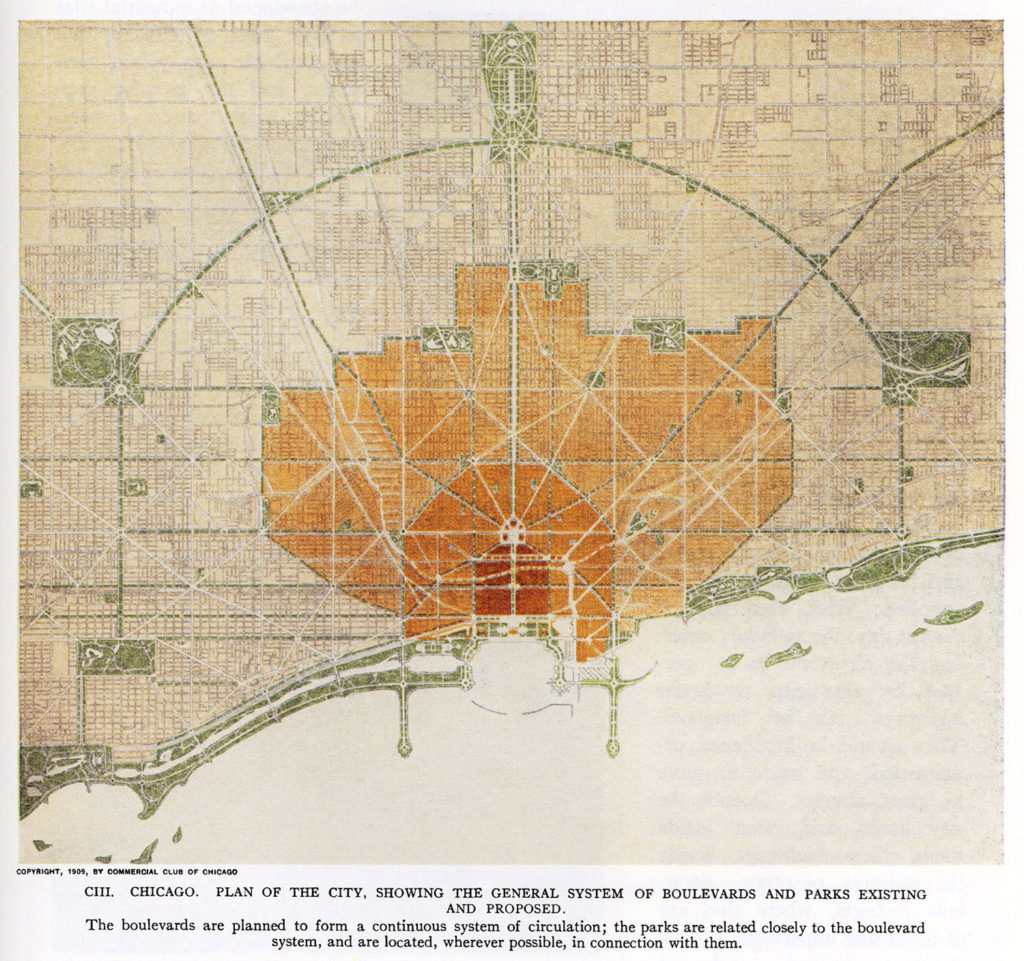
Waldheim offers perspective on these threads with the exhibition Big Plans: Picturing Social Reform , on view through September 15 at Boston’s Isabella Stewart Gardner Museum. Waldheim, the museum’s Ruettgers Curator of Landscape, collaborated with assistant curator Sara Zewde (MLA ’15) on the show, inviting viewers to see how landscape architects of the past, engaging with photographers and the media, advocated for social reform, and how the legacy of their work speaks to some of today’s urban and cultural challenges. “Social justice, equity, and reform are not new topics for landscape architecture—rather, they are at its origin,” Zewde notes. “This exhibit calls for a new look at the roots of the discipline.”
Waldheim and Zewde have curated a set of city plans, archival materials, historical maps, and photographs in order to demonstrate how, from its inception, landscape architecture as a field has invested itself in preservation, social justice, and economic equality. Zeroing in on the late 1800s and early 1900s, Big Plans features large-format urban plan drawings and small-format documentary street photographs, especially the work of photographer Lewis Wickes Hine. The exhibition considers central questions that intertwine visual media and landscape: How do pictures illustrate the conditions in our city now, and inspire us to improve them for the future? In other words: How do visual images support progressive social reform?
Olmsted’s career offers various entry points to these questions. As Zewde observes, Olmsted was first appointed superintendent of New York’s Central Park in 1857, as America was on the cusp of the Civil War. He advocated, through writing, for the end of chattel slavery and for a reconsideration of what society would need to do in order to overcome the “stain of slavery.”

“Olmsted and Eliot’s progressive and urban reform works of the late 19th century can be seen in the context of a country not far removed from that war, and engaging directly with those questions,” Zewde says. “Political and economic tensions remained high into the late 19th century as cities were witnessing intense rural-to-urban migration, industrialization, and immigration—forces that would prompt Olmsted and Eliot’s ‘Big Plans,’ and the formation of the discipline of landscape architecture.”
In Big Plans, Hine’s photography chronicles living conditions as experienced by immigrants in turn-of-century Boston. Like Hine’s broader body of work, which documents the working lives of children forced into industrial and agricultural labor and enduring soul-breaking conditions, these images demonstrate Hine’s commitment to advocacy and social reform. The large-format maps and urban plans in the exhibit encourage the viewer to envision the connection between Hine’s emotionally compelling images and the more orderly—but equally reform-minded—planning and design work led by Olmsted and Eliot.
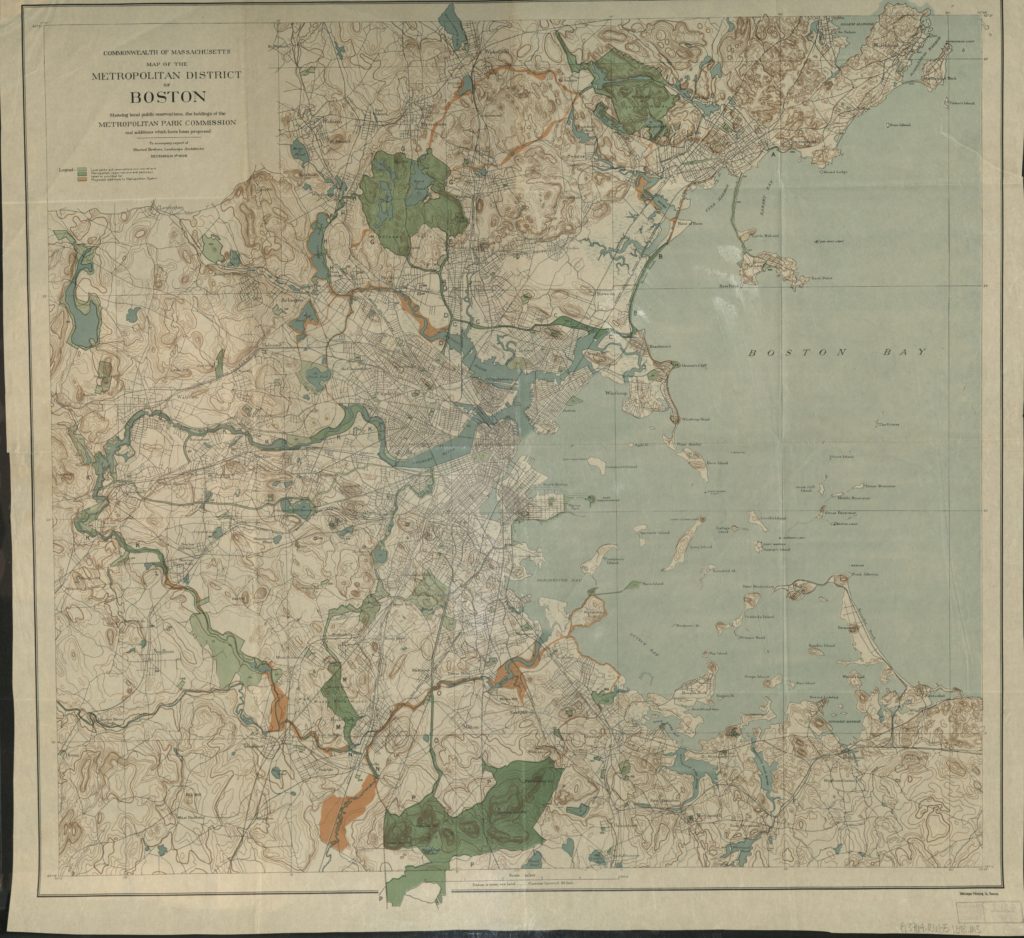
Waldheim and Zewde complement the exhibition’s core displays with interactive video and multimedia. Long-format video offers contemporary voices discussing and analyzing some of the work and themes on display, and “Map This”—an ongoing community-engagement project—invites viewers to help generate alternative mappings of greater Boston.
One of the show’s most evocative features, though, is at its entry wall. There, Waldheim and Zewde highlight a quote from Frederick Douglass, taken from a lecture Douglass presented in Boston’s Tremont Temple on December 3, 1861:
“Poets, prophets, and reformers are all picture-makers—and this ability is the secret of their power and their achievements. They see what ought to be by the reflection of what is, and endeavor to remove the contradiction.”
As Zewde observes, the power of what Douglass calls “picture-makers” is connected less to a specific medium and more to the process and thought behind envisioning or illustrating an idea or a moment.
“Rather, the power he describes is embodied in the process itself—the process of visioning the ‘is’ and the ‘ought,’ in so far as this is the first step toward bringing them in closer union,” Zewde says. “Digital techniques and contemporary media may open up new vantage points onto those visions, but ultimately these are tools to be employed in the greater pursuit of Douglass’ secret power.”
Celebrating Phil Freelon: Steven Lewis reflects on a career that transcended the ordinary limits of architecture
The passing of Phil Freelon has caused many of us who knew him to pause and reflect on the tremendous impact he had on our lives, our careers, and on the design profession as a whole. While we are saddened by the loss of our friend, there remains much to be thankful for, and much to remember with fondness. Phil possessed certain exceptional qualities that brought him great success as a husband and father, as a consummate professional, and as a friend who cared deeply about the well-being of others.

Phil rose to a level of career excellence and accomplishment that is rare among architects. From my personal observations, his successful legacy is attributable in large part to his wife, award-winning jazz vocalist Nnenna Freelon . Her talent served as a counterpoint to his; they were both focused on being at the top of their respective fields, while challenging each other to never be satisfied. As a master designer, Phil was humble, but he was also extremely proud of the many notable buildings he realized—in particular, buildings containing and displaying aspects of black history and the black experience. Of the many buildings Phil designed, one of my favorites is the Gantt Center, in Charlotte. The design of the façade takes its inspiration from West African textiles and Underground Railroad-era quilts. And the location of the stairs and escalators was influenced by an earlier local school nicknamed Jacob’s Ladder–which was a biblical reference to African-American educational advancement and achievement. The center’s design represents so much of what Phil was about—as a historian, an intellectual, and an intentional and insistent artist.
Phil transcended the ordinary limits of his profession. He was always anxious to share credit with his collaborators, even as he was proud of his own accomplishments as an architect and as a businessman. It was his commitment to selflessness and his willingness to put the needs of others ahead of his own that characterized his approach to work and life. The way that Phil would offer advice made his road to success knowable and possible (I’m sure that would be a big one on his list of how he might like to be remembered). Whether teaching at MIT, or entering work into the NOMA Design Competition, he always fulfilled requests to serve. But most of all, he had a zest for life. He enjoyed his family and friends with gusto, and his relationship with Nnenna was special. He never took his family or his marriage for granted.
Phil, you will be missed. But you’ll be remembered with such fondness that our sadness will soon dissolve into memories of all of the good work and good times that you shared with so many of us. Rest in peace, my friend.
About R. Steven Lewis:
R. Steven Lewis (LF ’07) is an architect and advocate for social justice and diversity within the field of architecture. As a Loeb Fellow at Harvard’s Graduate School of Design in the 2006–2007 academic year, Lewis’s research focused on the structural inequality affecting the number of practicing architects of color.
At Therme Forum, John May considers the balance of localism and globalism as designers envision the city of the future
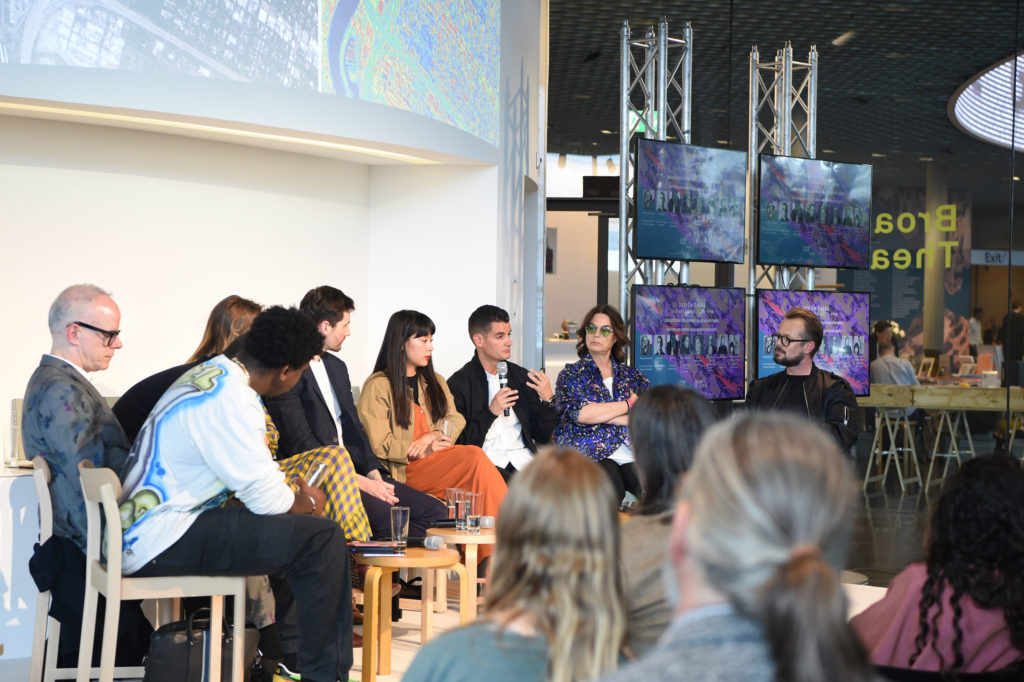
Architects and urban designers, in shaping the built environment, are increasingly tasked with addressing urgent social and political issues, including climate change, social equity, and aging infrastructure (and populations), alongside emerging questions of who informs urban design, and what sorts of perspectives and knowledge are fundamental to “good” urban design. Together with architects and engineers, might artists have a parallel role in steering our cities toward sustainable, inclusive futures?
Such interweaving of design perspectives lies at the heart of the Harvard Graduate School of Design’s Master in Design Studies program. In presenting at June’s Therme Forum, “The City of Artists–Cities Between Crisis, Catharsis and Creation ,” MDes program codirector John May framed some of today’s urgent concerns around urbanization and globalization as questions of calibration, balance, and imbalance.
“We have to reimagine what it actually means to be local in such a way that it understands the value of global politics of cosmopolitanism, while recognizing the real material impacts of the history of globalization, in particular the 20th-century history of globalization and the environmental footprint that it has left on our cities,” May observed during the June 11 event in Basel. “This is, I think, a massive experimental political project going forward that’s just a huge open-ended question and we need more experiments like this to begin to answer those questions.”
This latest edition of Therme Forum was presented within Design Miami/Basel’s 2019 curatorial theme of Elements: Earth, responding to the impact of human activity on the nature of our planet. The public event gathered a series of noted theorists and practitioners toexamine how artists can share responsibility with urban planners, architects, and engineers in reenvisioning the cities of the future as they germinate today.
Among other considerations, the conversation raised the need to rethink city planning to counteract the pervasive effects of globalization and increasing digital technologies with solutions that enhance interpersonal experiences and social connections. Weighing these issues, panelists considered whether city design, as well as existing city environments, could emerge as a platform from which artists may stimulate significant cultural transformation.
“So now you wanted to know is nature important in an artist’s project? Yes. Is sustainability important? Yes. It’s important for the whole planet to become sustainable,” observed panelist Maja Hoffmann, founder and president of Luma Arles. “Now, what is the artistic gesture… you were saying it’s not enough to observe, you want actually to be active. So that means that if you take a role in society you become an activist. As an artist you can be an activist.”
Hoffmann and May were joined by co-panelists Lonneke Gordijn (artist, Studio Drift); Jon Gray (cofounder, Ghetto Gastro); Arthur Mamou-Mani (architect); Studio Swine (art collective); and Hans Ulrich Obrist (artistic director, Serpentine Galleries), with moderator Mikolaj Sekutowicz (curator, Therme Art Program).
At the GSD, May’s MDes program ties together a variety of disciplinary interests with one central question: How do we prepare for challenges that no longer conform to the boundaries of disciplines? MDes students and faculty experiment with this idea through a series of pedagogical lenses. The program’s Art, Design, and the Public Domain track asks questions similar to those raised at May’s June panel; most fundamentally it examines how art can intervene in civic crises or debates. Elsewhere in the MDes program, students and faculty consider ecology, conservation, technology, and philosophy as they bear on the design of buildings, communities, cities, and environments.
And, like the June Therme panel, the MDes program explores how alternative or non-traditional methodologies might cultivate novel approaches to design for this century.
In addition to his MDes directorship, May is an assistant professor of architecture and a founding partner, with the GSD’s Zeina Koreitem, of MILLIØNS , a Los Angeles–based design practice. Their experimental work has been featured in solo and group exhibitions at Friedman Benda Gallery, the Storefront for Art and Architecture, The Architecture + Design Museum of Los Angeles, and Jai & Jai Gallery, among others.
Similarly situated at the intersection of philosophy, technology, and the politics of environmentalism, May’s writings aim at a continual articulation of the conditions surrounding the contemporary design fields. His most recent book, Signal. Image. Architecture (Columbia, 2019), contemplates the psychosocial effects of transmissible electronic images, and their consequences for architecture and urbanism.
Facing the nation’s largest-ever infrastructure investment, GSD students ask: Who stands to benefit from a less car-centric LA?
UPDATE, 10/18/19: The American Society of Landscape Architects (ASLA) has awarded the project Mobility As Equality: Building Towards the Olympic/ Post-Olympic LA Transit (profiled below) the 2019 Award of Excellence in the Analysis and Planning Category of its annual ASLA Student Awards . Read more about the project and its design team (Amanda Ton, WeiHsiang Chao, Xin Qian) in the following feature.
There’s a movement underway in Los Angeles to rediscover public spaces, to reconsider the city’s focus on cars, freeways, and single-family homes, and to engage public transit as an integral rather than supplementary urban element. It’s a moment of reckoning that’s being fueled, in part, by the largest infrastructure investment in United States history: In passing Measure M in 2016, Los Angeles approved an additional sales tax that will provide $120 billion for new rail lines in the LA Metro system by 2047.
In other words, Angelenos voted to tax themselves in order to fund and improve the city’s public transit. It’s a noteworthy gesture from the “car capital” of the country, an acknowledgment that a growing metropolis needs good public transit. Rather than continual expansion at its edges, LA is dedicated to strengthening its urban core.
In 2016, in the glow of Measure M and its milder predecessor, Measure R—which Measure M extends in perpetuity—then–Los Angeles Times architecture critic (now LA’s chief design officer) Christopher Hawthorne declared that the city is on the threshold of being the “Third LA.” According to Hawthorne, the First LA spanned the late 1800s through World War II, and the Second LA, with its stereotypes of car culture and suburban sprawl, covered the rest of the 20th century.
The Third LA is interested in the model of a shared city, with the future of its streets, its public transit, and its people forming the heart of this equation. The city has reignited the pioneering, growth-minded spirit of the First LA and has grown newly interested in the physical infrastructure, especially the streets, of the Second LA. Many of the concerns inherent to the Third LA center on public space, including those many streets and highways, as the city grows and changes and as it finds itself needing to accommodate more people.

Yet even as LA progresses toward a more transit-oriented future, it is simultaneously a battleground for private-sector technologies like ride- and bike-share companies and autonomous vehicles. And accompanying the city’s growth are the familiar problems of higher cost of living, displacement, and economic anxiety.
In the spring of 2019, Future of Streets in Los Angeles—Andres Sevtsuk’s Harvard Graduate School of Design studio—examined how LA might maximize the opportunities at stake. The studio sought strategies to creatively optimize investment in public transit in an increasingly hot market for private-sector services. How can technology complement, rather than compete with, public transit? And, as LA reshapes itself, can it improve equity, sustainability, and quality of life as it aggressively redevelops its transit systems?
Sevtsuk and students met with stakeholders across the city. They held closed-door meetings with the Department of City Planning, LA Metro, and other agencies. They workshopped and codeveloped proposals with members of the LA community, and experimented with LA’s terrain with help from Renault-Nissan’s Future Lab and Ford’s Smart Mobility Team. The ensuing dialogue and proposals get to the heart of how Americans view transit decisions and civic investment, drawing instructive contrasts between simple, shovel-ready fixes and visionary, fundamental transformation.

Streets Are for People
Sevtsuk focused the early weeks of Future of Streets in Los Angeles on LA’s historical and contemporary contexts, in which roadways and highways loom large. From this, studio members Sunmee Lee and Yuebin Dong asked: With such an expansive, interconnected system of highways, and one that’s so ingrained in Angelenos’ minds, why not start our current transit conversations there?
Dong and Lee’s proposal, “Highways as Public Transit Infrastructure,” reimagines the Los Angeles County highway system as the backbone of a public-transit network. The project would repurpose HOV-Express lanes on area highways as a series of bus stations, with local “Micro-Dash” connector shuttles to ease transfers between the new, highway-based stations and existing Metro hubs, ultimately creating almost door-to-door commutes. New transit stations along the highway would gradually be enhanced with community-focused amenities, resolving a long-standing frustration over the often uncomfortable, neglected bus stations that LA residents are accustomed to.
The proposal aims to expand the advantages of the already existing system, as well as the new Measure M budget, to more and more people. Dong and Lee crunched the numbers, looking at demographic, financial, and traffic-flow data. As an alternative to the purely rail-focused investments of Measure M, their highway-based bus system would achieve 5.4 times more new transit coverage for LA County and its residents, and would reach 3.5 times more low-income households—all under the same budget as Measure M’s current plan.
Dong and Lee seek to promote both equitable and efficient mobility by fundamentally reconsidering how the highway is used. In bringing transit access to more people—especially low-income families—they also seek restorative justice, addressing the aggressive red-lining and dismantling of neighborhoods that accompanied the highway boom of the mid-1900s. “Since the automobile era began, transportation injustice in LA has been reinforced,” Dong and Lee write. “Our proposal suggests bringing public transit to the places in most need, while avoiding the displacement of existing communities.”
Part of their vision springs from a workshop the studio conducted in February in LA, alongside the Renault-Nissan Future Lab. Studio members were assigned fictional identities, fixed budgets, and an errand to accomplish by using various transit modes. Students realized how difficult—if not impossible—it can be for many Angelenos to carry on their daily lives with such unpredictable, expensive, or inconvenient transit options.
“This project offers an incredible potential social experiment,” said Josefina Aguilar, Executive Director of T.R.U.S.T. South LA. (Aguilar and her colleagues held an afternoon-long, community-exchange workshop with Sevtsuk and the studio at T.R.U.S.T. South LA’s offices in February.) With Dong and Lee’s plan, Aguilar was especially excited about the opportunity to solicit community input toward station-based amenities, imagining possibilities like street vendors operated by local residents.
A map of LA bus routes can resemble a pile of spaghetti more than a structured system. Bringing rail-system regularity to a bus schedule, while also opening highways to uses beyond cars and trucks, allows Dong and Lee to alter how passengers weigh buses in their transit decisions. By layering transit atop LA’s extensive system of highways, the designers aim to bring the transit to where people already live, or where their travel routes currently weave, instead of the more common method of trying to coax people toward where transit hubs are placed.

Similarly, Dong and Lee’s colleagues Andrew Yuzhou Peng and Solomon Green-Eames sought ways to revisit the densify-around-transit typology. Their proposal, “Change the Street, Transform the City,” brings bus rapid transit (or BRT) closer to community centers where density and amenities already exist, and seeks targeted, community-led street transformations, coupled with increased affordable housing, to create more walkable and bikeable neighborhoods.
Green-Eames and Peng consider LA a city of dense sprawl, one that is running out of the land that has sustained dreams of single-family homes on a hillside. They explain that LA’s urban form does not respond well to population density: With commercial land use that is based largely on strip malls, walking is inconvenient, and adding more people to the mix only compounds these difficulties. While Green-Eames and Peng see a current model of intense development around LA Metro hubs, they observe that those very transit centers aren’t necessarily where the actual cultural centers of neighborhoods may be.
“The existing model of transit-oriented development has failed to create truly walkable communities,” they write. “Our project proposes an alternative approach, through radical community-driven transformations, seeking to imagine how existing neighborhood commercial centers could become mixed-use, dense, and walkable centers, connected via a network of transit boulevards.”
Zooming in on LA’s Jefferson Park and the nearby Crenshaw station on the LA Metro’s Expo Line, Green-Eames and Peng propose starting with low-cost, tactical, street-based recreational facilities by 2021, and making these temporary transformations permanent by 2027. Then, with a goal date of 2047, they propose inclusionary upzoning, adding new incentives to 2016’s Measure JJJ, which lays out affordable housing mandates and hiring restrictions around residential projects that require a zoning change or an amendment to the city’s General Plan.
More broadly, Green-Eames and Peng also propose a network of “transit boulevards” that include bike lanes, ride-share pick-up spots, and linear parks, all in one. The underlying concept is connecting transit hubs like Crenshaw to others, making it easier to hop from center to center via bus or bike.
Like Dong and Lee, Green-Eames and Peng seek to reimagine what “street” means: They envision the street as a more dynamic, urbane element, rather than just a conduit of cars and cars alone. They believe it can be a public platform that holds and enables a variety of uses, ideally maximizing both the efficiency and accessibility of travel and the quality of community life.
In adopting this view of “complete streets”—prioritizing pedestrians, bicyclists, and other users beyond single-passenger cars—these designers engage in an approach that has been taking root at the LA city-planning level. In 2016, LA’s Department of City Planning (LADCP) updated the city’s Mobility Plan 2035 with a stronger emphasis on the plan’s transportation section, which had last been touched in the late 1990s. Over the last two decades, new developments including bike-shares, ride-shares, scooters, and other mobility patterns have arisen alongside traditional transit systems, motivating city planners to apply a complete streets approach. What do pedestrian crossings and sidewalks need to include, for instance, in order to make people feel safe whether they’re inside a car or not?
“For the so-called ‘car capital’ to have policies that embrace complete streets, was a fundamental change,” said Claire Bowin, Senior City Planner at LADCP, during the studio’s February meeting in LA. “The city has been going through these growing pains—which is why this is a good moment for Andres and the studio to be here.”

Transit as Civic Instigator
In reinventing LA streets, Sevtsuk’s studio gestures toward a fundamental reconsideration of the city’s elements, where public and civic spaces emerge as the glue between those elements. With an eye to the value this can add, various Future of Streets proposals pursue transit as a way to provoke new investment, both financial and cultural, in LA’s public space.
“We could fit several Central Park–sized spreads in LA if we really wanted to,” observes the studio’s Bailun Zhang. Zhang and his partner, Lanchun Zeng, proposed “Less Parking, More City” as both the title and the mission of their LA reinvention. The design students investigated the LA Metro’s Expo Line—and specifically its Pico station—considering how many of the virtually countless parking spaces along the line could be reclaimed as public space, affordable housing, or other civic amenities. Zeng and Zhang started thinking beyond just parking spaces: Where does affordable housing exist today in LA, and where is it needed?
At the meeting with the LADCP in February, Sevtsuk’s studio learned that, as LA’s population continues to grow—currently at 4 million people, the population is projected to hit nearly 7 million by 2050—housing policy is of paramount concern. So Zeng and Zhang built housing into their formula, and also focused on LA’s “green-space deserts” and other critical needs, and how these needs might be addressed with pocket-park–sized parcels of land.
A common obstacle for both housing and transit development is displacement: Establishing a new transit station often makes the surrounding neighborhood more appealing, increasing demand and prices and forcing longtime residents to move out. The question of how to balance the interests of community members and real-estate developers is an essential component of the dialogue about urban development today. Students Dora Du and Sangyoon Lee analyzed current housing and zoning policy and proposed a clear mechanism through which to reinvest rising housing profits into the community. Their proposal, “Mutualism: A win-win model for communities and developers,” would subject new housing to new tax rates, and would accumulate the revenue into a fund to be collected and distributed through a community board.
Olympic Potential Looms
Amid LA’s continued expansion, one significant catalyst looms in the coming decade, promising economic growth but also possible displacement. With the 2028 Summer Olympics approaching, LA has the potential to inspire civic pride and engagement, but it also faces the complex questions of building and maintaining a massive amount of infrastructure—along with the parallel concern over what happens to all that infrastructure when the party’s over.
The city has some experience with this. The 1984 Summer Olympics instigated an extraordinary regional cooperation effort, in which Metro provided more than 500 buses to create a temporary transit network. Might the upcoming Olympics, and the infrastructural lift it inevitably demands, provide stronger—and sustained—momentum for transit-oriented growth?
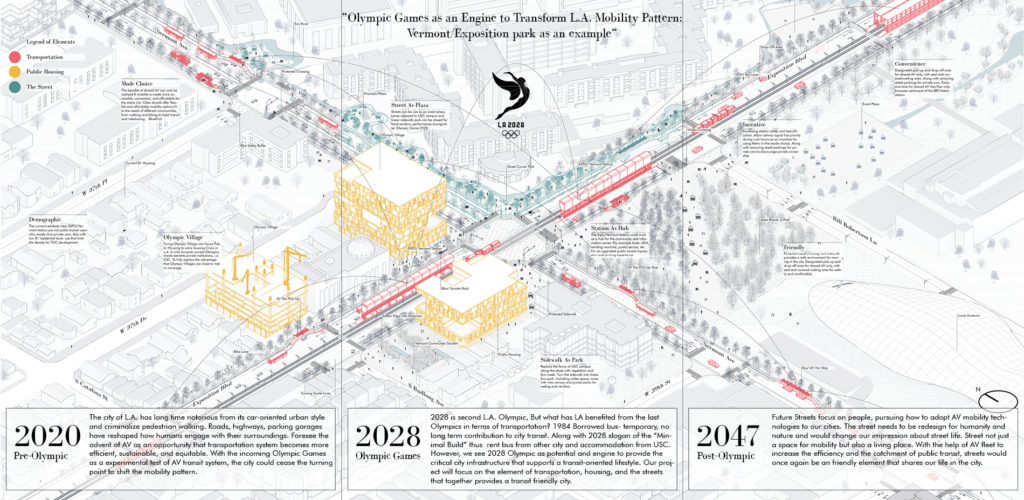
Amanda Ton, Ollie Xian, and Weihsian Chao think so. Their Future of Streets proposal, “Mobility as Equality: Building Towards the Olympic/Post-Olympic LA Transit,” leverages the Olympics as a means of coordinating transit planning and public housing development, eyeing the street design around the Expo Line’s Vermont station. The team argues that a mismatch between transit and its users has fueled low transit ridership: Many low-income transit riders have been displaced from transit hubs and forced outward, into the city’s margins and into cars, further marginalizing disadvantaged communities.
Anticipating 2028, they envision a next-generation bus system that can persist well after the last medals are awarded, while newly built Olympic housing is converted into public housing, managed by LA’s Housing Authority. They look to London’s 2012 Summer Olympics as a precedent: In London, so-called Olympic Villages were converted into affordable housing and integrated into transit rather than separated from it.
Transit that Connects, not Divides
As part of its goal of improving public transit, the Future of Streets studio was also interested in bettering the transit experience itself. Linyu Liu and Finn Vigeland looked at specific modal connections, transfers, and the time spent waiting for each—a tall order, given that two-thirds of LA Metro users make at least one transfer each trip. They saw transfer points that are neglected and difficult to use: Many lack signage, seating, or shelter, especially stations along the Expo Line, which runs down the center of major LA boulevards. A number of these stations are also very narrow and force transit users to cross wide streets and dodge traffic. They look and feel like afterthoughts because, in many cases, they are. Liu and Vigeland argue that such poor experiences, specifically with transferring between modes or lines, may explain why cross-modal transit use is so low in the LA Metro system. “A lot of small details can add up to a bad overall experience,” says Vigeland.
The history of LA’s development has generally clung to an east-west axis, and many boulevards and transit lines run in this direction today. But LA has become a more polycentric city, and north-south bus routes serve as vital circulators for huge numbers of Angelenos. Liu and Vigeland thus isolated north-south transit—which, incidentally, underlies many of Measure M’s proposals—as a principal need.

After weeks of mapping and data analysis, they targeted Vermont Avenue for its heavy bus use, as well as its interaction with the Expo Line. Their proposal, “Re-Designing the Multi-Modal Transfer System,” eases those transfer pain points: Flexible-use lanes would accommodate ride-shares and commercial loading areas; ramps would maintain an even grade between station platforms and sidewalks; and pedestrian and bicyclist crossing zones would be established. Their proposal reduces some of the seemingly minor, but collectively inhibitive, barriers to transferring lines or modes.
Investing in Transit for the Benefit of Everybody
For LA’s transit future, some of the most pressing questions are related to access: Who are “transit users,” and who might become transit users if it can improve, by becoming more efficient, accessible, comfortable, and reliable? The Future of Streets studio and their proposals aim to enhance the transit experience, while creating a new, more equitable, more accessible version of the LA that millions of people have chosen as home.
In all the dreams and visions of what transit can look like, in LA and beyond, LADCP’s Bowin distilled the equation succinctly. “We went out to voters and said, ‘When you pay more, this is what you’ll get in return.’”
In the wake of Measure M’s passing, LA Metro produced an advertising campaign that’s now mounted throughout the system’s stations. “There’s a movement in LA,” the text-only posters read. “It’s a movement fueled by people coming together to create the best life possible for our families and our communities. Our movement is leaving the smog and stress behind, saying Yes to dozens of new transportation projects that connect us to jobs, schools and opportunities to explore everything LA has to offer.”
“Yes, there’s a movement in LA,” the ad concludes. “We are the movement. And our time is now.”
In Memoriam: Philip Goodwin Freelon (1953–2019)
Philip Goodwin Freelon (1953–2019) died on July 9 at the age of 66. The renowned architect, designer, husband, and father of three left an indelible mark on the world of architecture and design, most recently with the opening of the Smithsonian Institution’s National Museum of African American History and Culture in Washington DC, for which he served as lead architect.
An esteemed member of the Harvard Graduate School of Design community, Freelon first came to the GSD in 1989 as a recipient of the Loeb Fellowship. More recently, he established the Phil Freelon Fellowship Fund, which expanded opportunities for African American and other underrepresented students, and collaborated on the creation of the African American Design Nexus .
Freelon was a passionate and committed advocate for equity, access, and representation in design and the arts. In establishing the Freelon Group in 1990, he sought to bring inspiring design to people and places that had often been overlooked. The Freelon Group would eventually become one of the nation’s largest African American-owned architecture firms. Freelon believed that diverse teams can produce remarkable results. His most celebrated projects include the National Center for Civil and Human Rights in Atlanta , the Harvey B. Gantt Center in Charlotte , the Museum of the African Diaspora in San Francisco , and Emancipation Park in Houston.
Philip Goodwin Freelon was an architect whose influence transcends his landmark projects, his decades of teaching and mentorship, and his focused, committed activism for diversity and representation in design. The design world has suffered an enormous loss, and the GSD community honors and celebrates Phil and his profound legacy.
Materiality and Modernity: Design Studies graduates awarded prizes for outstanding theses in 2019
Master in Design Studies graduates from a range of program areas were awarded prizes for exemplary theses at Harvard University Graduate School of Design’s 2019 commencement. Their work offers a look into the various ways MDes students are using their studies to examine the processes that shape contemporary life.

Malinda Seu (MDes ADPD ’19) is the recipient of the 2019 Design Studies Thesis Prize for Cyberfeminism Catalog 1990–2020, which poses the question, “What is a woman anyway?” “The creation and use of this catalog is a social and political act. The texts, organizations, events, and other media aggregated herein push against the dominant understanding of internet history. We are taught to focus on engineering, the military-industrial complex, and the grandfathers who created the architecture and protocol. But the internet is not only a network of cables, servers, and computers. It is an environment that shapes and is shaped by its inhabitants.” Carl A. Pescosolido Professor of Romance Languages and Literatures and of Comparative Literature, Faculty of Arts and Sciences, and GSD Faculty Affiliate Jeffrey Schnapp served as Seu’s Faculty Advisor.
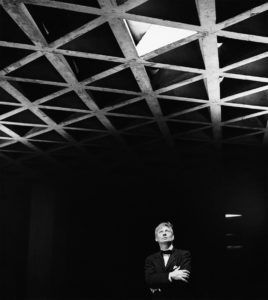
Izzy Kornblatt (MDes CC ’19) is the recipient of the 2019 Design Studies Thesis Prize for Architecture for a New World: Louis Kahn and Philadelphia, a project that seeks to reframe the work of architect Louis Kahn through the lens of modernity rather than an archaic past. “Based upon extensive archival research and interviews, I argue that Kahn and his engineers, working in collaboration, derived a distinctive architecture from the ways of thought embedded in Philadelphia. I show the origins of Kahn’s method to be in the work of Frank Furness, passed on to Kahn by his mentor George Howe. From them Kahn inherited a commitment to an architecture of material and programmatic honesty—an architecture that against the abstraction of high modernism and formalism of the Beaux-Arts sought to reflect the conditions of contemporary life.” Critical Conservation Area Heads George Thomas and Susan Snyder were Kornblatt’s Faculty Advisors.
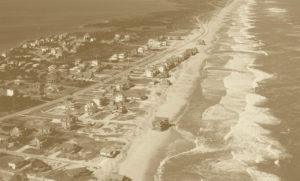
Maggie Tsang (MDes ULE ’19) and Isaac Stein (MLA/MDes RR ’20) are the recipients of the Design Studies Thesis Prize for Lines in The Sand: Rethinking Private Property On Barrier Islands. Tsang and Stein’s research looks at ways in which private property is transforming the landscape of barrier islands and proposes an “alternative land trust” as a way of returning coastal territories to their natural function. “By designing protocols and procedures that reverse prevailing development logics, this trust seeks to reduce public expenditure on privatized shorelines and ultimately to return the barrier island to its ecological function as a coastal defense line.” Rosetta S. Elkin, associate professor of landscape architecture, served as Faculty Advisor.
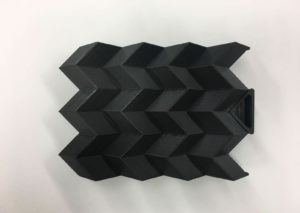
Pamela Lucia Cabrera Pardo (MDes EE ’19) is the recipient of Daniel L Schodek Award for Technology and Sustainability for The Humid Threshold: Cooling hot, humid climates via membrane dehumidification, a project that examines ways in which a membrane material can be designed as a cooling system using water vapor extracted from humid air. “This application could lower the latent heat that drives air conditioning demand in humid climates, and thus increase natural ventilation potential and other passive dry-bulb cooling strategies.” Lecturer in Architecture and Research Associate Jonathan Grinham was Cabrera Pardo’s Faculty Advisor.
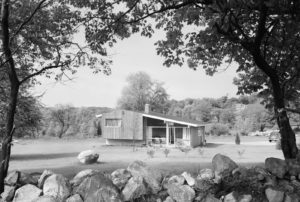
Charlotte Leib (MDes HPDM ’19) is the recipient of the “Best Paper on Housing” prize, awarded by the Joint Center for Housing Studies of Harvard University, for Site and Shelter: Design for the ‘Whole Landscape.’ The thesis explores how the terms ‘site’ and ‘shelter’ were used by modernist architects, landscape architects, planners, and government agencies to conceptualize the built environment during the first decades of the twentieth century. “The thesis concludes by highlighting the efforts of several of Gropius and Wagner’s students who created a non-profit housing corporation, ‘Site and Shelter’, in 1948, to experiment with the communitarian and proto-ecological housing design ideals that they had learned in Wagner’s eponymous course and in Gropius’ design studios.” Associate Professor of Landscape Architecture Sonja Dümpelmann served as Faculty Advisor.
Remembering Pei: Tracing the architect’s legacy to the Harvard Graduate School of Design
Ieoh Ming (I.M.) Pei died on May 16, 2019, at the age of 102. Over six decades, the Pritzker Prize-winning architect developed an inimitable sensitivity to form, light, environment, and history that transcended the rationalism of his Bauhaus education. The ideas he pursued and refined throughout his celebrated career can be traced back to his time at Harvard’s Graduate School of Design.
Pei came to the GSD in 1942 to study with Bauhaus founder Walter Gropius and his protégé Marcel Breuer, and he stayed on after graduating in 1946 to teach for two years. His architecture thesis, a project that culminated his time as a student, was a design for a Chinese art museum for the city of Shanghai. It proposed a series of small galleries conjoined with gardens at a scale that evoked a sense of privacy traditional to Chinese art museums. But it also represented a thoroughly modern design and foretold a deepening interest in the interdependence of physical space, light, and environment—the built environment and the natural world.


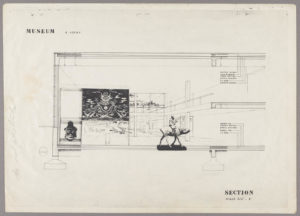

“It was at that moment that I said I would like to prove something to myself, that there is a limit to the internationalization of architecture,” said Pei of the project. “There are differences in the world, such as climate, history, culture, and life. All these things must play a part in the architectural expression.” In modernism, the measure of successful architecture could be somewhat absolute, eliding cultural, historical, and ethnographic concerns, which would return to the fore in the following decades. Designing a museum for Chinese art created an opportunity for Pei to test the limit of this “internationalization,” owing to the culture-specific differences in how art objects in China and the West were commissioned and shown. Western museums housed art objects intended to be on continual public display and required vast galleries and copious wall space. Chinese art museums, by contrast, housed art objects historically intended to be brought out of storage and shown only on rare occasion and as an intimate, private experience.
Of the hundreds–if not thousands–of theses presented during Walter Gropius’ 15 years at the GSD, Pei’s stood out for the way in which it resolved a fundamental tension between the cultural and historical exigencies of a Chinese art museum and the imperatives of modernist design. Gropius sang its praises, describing Pei’s project as the best student work to come out of the GSD during his time at the school. He later published Pei’s thesis across a two-page spread in the February 1950 issue of L’Architecture d’Aujourd’hui, writing that Pei’s project “clearly illustrates that an able designer can very well hold on to basic traditional features—which he has found are still alive—without sacrificing a progressive conception of design.”

Pei’s project, titled Museum of Chinese Art for Shanghai, was memorably described by Henry Cobb (AB ’47, MArch ’49)—Pei’s longtime partner at Pei Cobb Freed & Partners and friend of more than 70 years—at a celebration of Pei’s 100th birthday held at the GSD on March 30, 2018. In explaining the significance and enduring relevance of Pei’s thesis, Cobb said that the project “was not just something he did on a whim. It was something of fundamental importance to him, which became directive of his subsequent professional life in a very real way… I doubt there’s ever been a piece of student work that was more predictive of a professional life to come than this project.”
Pei’s coursework at the GSD was interrupted by a two-and-a-half year stint with the National Defense Research Committee beginning in 1943—at the height of World War II—and the birth of his first son, T’ing Chung. He finished his degree in 1946, and in 1948 he began working for the real estate developer William Zeckendorf at Webb & Knapp in New York City. The 12 years that Pei worked for Zeckendorf undoubtedly was an extraordinary complement to his GSD education. He not only found himself designing skyscrapers and other large-scale projects, but in working for a developer he also was exposed to the kinds of financial and regulatory strategy, deal-making, and governmental stewardship that make substantial building projects possible. Taken together with the charm and urbane sophistication he was known for, it was an education that helped Pei secure competitive projects like the John F. Kennedy Presidential Library and the addition to the Louvre Museum, a project that was initially met with fierce opposition.
In 1955, Pei founded I.M. Pei & Associates (later to become I.M. Pei & Partners, then Pei Cobb Freed & Partners), and formally broke from Webb & Knapp in 1960. As the firm gradually became independent from Zeckendorf, more and more of Pei’s own architecture became realized in building projects. Kips Bay Plaza—a low-income housing project in Manhattan undertaken for Zeckendorf—was opened in 1963 and marked an advancement in the level of aesthetic consideration then thought possible within the financial constraints of low-income housing construction. The offset composition of the site plan allowed for parks and gardens for residents, echoing the pairings of galleries and offices with Chinese gardens in Pei’s thesis project.
Kips Bay is also exemplary of Pei’s intense, career-long focus on materials and his mastery of concrete. In this case, poured-in-place facades made up of grids of delicately formed, deeply recessed windows cast crisp shadows, lending residents privacy while visually softening each building’s overall magnitude. According to Pei, the use of concrete was made possible by the tenacity of Zeckendorf himself. The cost of concrete through conventional builders was too high, but Zeckendorf’s commitment to Pei’s idea drove him to extreme alternative measures: He acquired an industrial engineering company that specialized in building highways, just to keep the cost of concrete within budget. The poured-in-place facades showed up again in projects including the Society Hill Towers in Philadelphia (1964) and the Silver Towers in New York (1967).
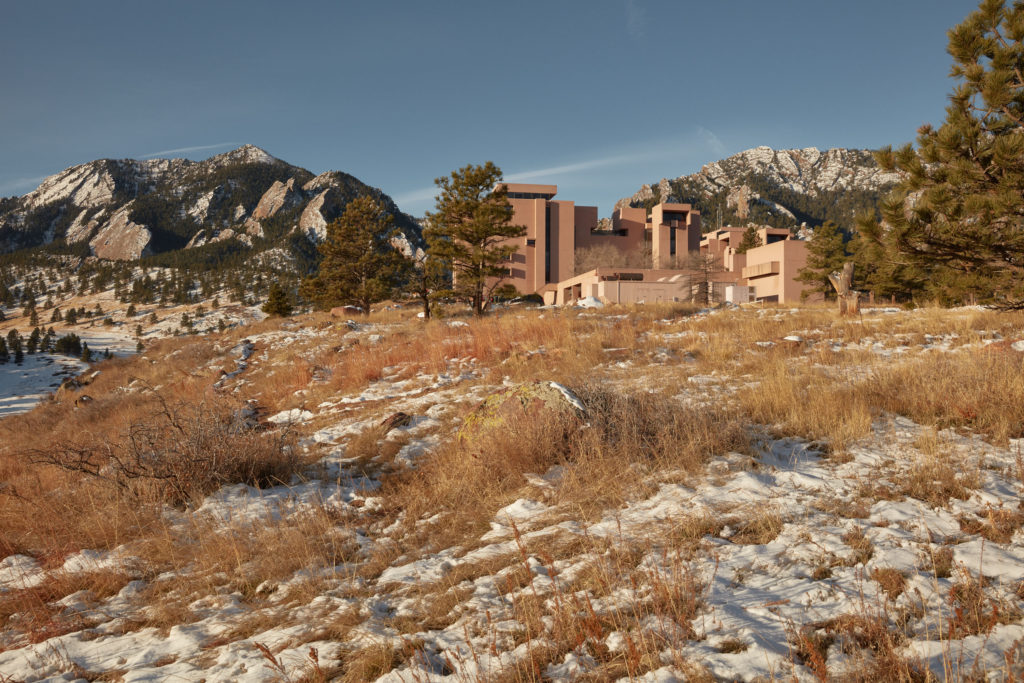
The years following saw the development of some of Pei’s most celebrated buildings. The National Center for Atmospheric Research in Boulder, Colorado, was completed in 1967 and was an important opportunity for Pei to explore the radical extent to which architecture could be integrated into its environment. Viewed from a distance, the complex all but disappears into the mountain it occupies. His first art museum in the U.S.—the Everson Museum of Art in Syracuse, New York—was completed in 1968. In his 2018 talk at the GSD, Henry Cobb noted in the building a consistency and evolution in composition and balance that, again, began with Pei’s thesis. Opened in 1968, the Everson Museum of Art put Pei on track to win important commissions for cultural institutions like the East Building of the National Gallery in Washington, which in turn led to his commission for the Louvre.
Over the course of his career, Pei designed a wide variety of buildings, many of them now essential fixtures of their cities—the Meyerson Symphony Center in Dallas (1989), the Bank of China Tower in Hong Kong (1990), and the Rock & Roll Hall of Fame in Cleveland (1995), to name a few. But he is perhaps best known for his art museums. Following the Everson Museum of Art, the East Building of the National Gallery was, at the time, Pei’s most high-profile museum commission, and also one of his most challenging sites. The building not only needed to fit a difficult trapezoid-shaped parcel of land and correspond to the museum’s original West Building, but it also needed to reflect the monumentality of the National Mall and respect the projection of federal power embodied in the geometry of its plan. Pei resolved all of these high demands with one simple, elegant stroke: dividing the trapezoid site into two triangles, one isosceles and one right triangle. The base of the isosceles triangle serves as the East Building’s entrance, and opens to face the West Building, with its midpoint located to create a continuous east-west axis across the entire museum complex. The base of the right triangle faces east to the United States Capitol building and houses administrative offices and a study center. The pairing of these two triangles was an ingenious way of integrating the building within the overdetermined context of the National Mall while also preserving its distinct identity. On the surface, such decisions reflect a sensitivity to urban design that Pei no doubt honed during his time working with Zeckendorf, but they also reveal his keen insight into the relationship between architecture and its environment that, again, can be seen germinating in his GSD thesis and evolving throughout his career.

The East Building of the National Gallery was a near-unanimous critical and popular success, with the New York Times declaring the building one of the greatest of all time and Pei one of America’s best architects. In later years, Pei would go on to design other museums that earned global acclaim—the Miho Museum in Kyoto (1997) and the Museum of Islamic Art in Doha (2008), for example. His 1989 addition to the Louvre in Paris, however, will be viewed as his crowning achievement. Perhaps recognizing the daunting stakes of the project, he did not immediately agree to take it on, even after a personal entreaty from the president of France, François Mitterrand. More than 300 years earlier, French architect François Mansart had submitted at least 15 proposals to renovate the Louvre, all of which were rejected. Subsequently, at the invitation of Louis XIV, Italian architect Gian Lorenzo Bernini submitted four proposals that met the same humiliating fate. After a series of secret research trips to Paris to visit the museum, however, Pei came to believe that he should accept the commission, and he also concluded that “something must be done” about the Louvre’s dire condition.
Built in successive waves since the 12th century, originally as a fortress for soldiers and munitions, the Louvre has been adapted to accommodate a range of functions, and it presented Pei with many steep challenges: The main entrance was located along the Seine, facing south and away from the museum’s neighboring buildings and streets; the central courtyard, Cour Napoléon, was relatively neglected and being used as a parking lot for the Ministry of Finance; the serpentine floorplan was disorienting for visitors; and only 10% of the building’s square footage was dedicated to non-gallery uses like storage and administration (in the 1980s, the standard was 50%).
Much like his approach to the East Building of the National Gallery, Pei’s idea for the Louvre was at once amazingly simple and brilliant in the way it resolved a highly complex set of issues into a celebrated national icon. In excavating Cour Napoléon and adding a subterranean main entrance below the glass pyramid at its center, Pei created desperately needed space for museum staff, opened the museum to greater public access from neighboring buildings and adjacent streets on the Right Bank, and simplified navigation for visitors. He shifted the museum’s center of gravity to its central courtyard, thereby transforming what had been the inhospitable and neglected heart of the U-shaped complex into a welcoming and active public square that showcased the Louvre’s existing architecture as its backdrop.

The project drew on all of Pei’s powers as an architect, urban designer, cultural sophisticate, and political tactician. His plan fully depended on—indeed, was set in motion by—President Mitterrand’s order that the Ministry of Finance, which occupied the Louvre’s northern wing (Richelieu), would be relocated elsewhere, and that the museum would expand to become the building’s sole occupant. Mitterrand’s authority to order such a drastic reorganization of the museum, however, was predicated on the consolidation of his political power, which was diminished after Jacques Chirac, leader of one of the opposition parties, was elected prime minister. Meanwhile, even though the most significant aspects of Pei’s plan would occur underground, it was the glass pyramid that became the main focus of swift and intense public outrage. The design was loudly derided as a “gigantic ruinous gadget,” an “annex to Disneyland,” and perhaps most acerbically, at least in 1980’s Paris, “a fake diamond.” The director of the museum, André Chabaud, resigned over it. When Pei unveiled the design to the Commission Supérieure des Monuments Historiques, the assault on his proposal became so intense that the translator is said to have burst into tears and withdrawn from the meeting.
Pei, however, remained undeterred and doggedly confident in the quality and logic of his plan, and rode the waves of critique while advancing his own strategy to reverse the tide of public disapproval. He hedged his good relations with President Mitterrand by cultivating a rapport with Chirac, one of Mitterrand’s leading political opponents who, prior to being elected prime minister, was mayor of Paris. As political fortunes shifted back and forth, Pei was able to steer a course forward as excavation and construction proceeded. He also was able to enlist some of France’s most prominent cultural figures to his cause: Pierre Boulez, the orchestra conductor, and Claude Pompidou, the widow of former prime minister and president Georges Pompidou, both rallied for Pei’s plan.

The turning point came when Chirac requested that a full-scale mock-up be prepared and shown to the public. For this, a crane was brought to Cour Napoléon to hoist cables to show the pyramid’s size and outline. The cables were left suspended from the crane for four days, during which an estimated 60,000 people visited the Louvre to see the mock-up firsthand. In response, Chirac declared the design to be “not bad”—an unequivocal gesture of approval, coming as it did from President Mitterrand’s political adversary—and praise for the project gained momentum and began spreading. Media outlets that once lambasted Pei’s proposal expressed their admiration. In March 1989, the pyramid and the new underground entrance to the museum opened to the public, making the Louvre the largest museum in the world and garnering enthusiastic international acclaim.
The Louvre will likely remain Pei’s most well-known achievement—certainly the most popular—but it also stands as the culmination of his developed sense of history and tradition and their role in modernism, the composition of space and light, and the relationship between architecture and its environment. The contrasting figure of the pyramid in particular represents a formal perfection that at once foregrounds, reflects, and disappears among the centuries-old buildings and Parisian sky that surround it. No less than the soul of France had been trusted to Pei’s hands, and he succeeded famously in elevating its history and prominence while bringing the building up to late 20th-century standards.
Ieoh Ming (I.M.) Pei (MArch ’46) was married to Eileen Loo Pei, who studied landscape architecture at the GSD. They had been married 72 years when she died in 2014. I.M. is survived by their two sons, Chien Chung (Didi) Pei (AB ’68, MArch ’72) and Li Chung (Sandi) Pei (AB ’72, MArch ’76), their daughter Liane Pei, and several grandchildren and great-grandchildren. I.M and Eileen’s eldest son, T’ing Chung Pei (AB ’65), was an urban planner and died in 2003.
Work in Progress: Soledad Patiño’s fishing villages
Soledad Patiño (MAUD ’20) describes her final project for the option studio “Extreme Urbanism 6: Designing Sanitation Infrastructure” led by Rahul Mehrotra, spring 2019.
June 2019 News Roundup
Krzysztof Wodiczko’s technological installation LORO (THEM) , which features drones equipped with digital screens and loud speakers, was launched during Milan Photo Week. “For More Art’s premiere international commission, Krzysztof Wodiczko has worked closely with members of Milan’s growing immigrant population to explore the complexities of life as a refugee on a continent that is increasingly hostile towards foreign newcomers.”
Bing Wang is profiled and interviewed in the American Planning Association’s Special China Report , the first in a series of APA’s nation-specific reports covering planning-related issues and projects developing outside the United States.
The 2019 American Institute of Architects Wisconsin Honor Award recognized LA DALLMAN, the practice of Grace La and James Dallman for their project, the Levatich House, also known as the Flat Top House. The project was one of three projects to receive an Honor Award for overall architectural design excellence from among 100 submissions, and the only single family home to be so recognized.
The Knight Foundation has named Chelina Odbert a winner of its inaugural Knight Public Spaces Fellowship. The co-founder and executive director of Kounkuey Design Initiative (KDI), a nonprofit design and planning firm, Odbert has led the design and development of public spaces across the U.S. and around the world, including a network of public spaces in California’s Coachella Valley, a “Play Streets” program with the Los Angeles Department of Transportation, and an ongoing multi-phase public space project in Nairobi, Kenya.
Have questions about a news item, or have something to share with us? Write to the GSD News desk.

